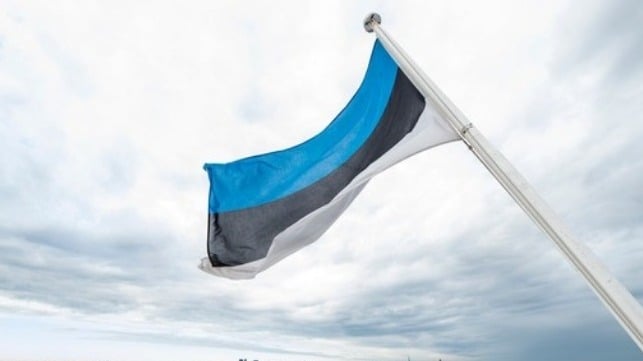Estonian Flag Offers Fast Service, Low Bureaucracy

In the spring of 2023, a cargo ship that had been sailing under the flag of Gibraltar was re-registered under the Estonian flag in a single day. The ease of the transition was the result of an effort begun in 2020 by the Estonian government. The country is known for its e-solutions and the goal was to create a system that was every bit as efficient to register vessels.
“There was time needed to gather the ship’s documentation beforehand," says Kristjan Truu, Head of Maritime Division at the Estonian Transport Administration. "But when all that was in place, the ship was registered, audited by inspectors and the classification society, the certificates issued, and the flag changed, all in a single day."
Shipowners talked, Estonia listened
In 2020, Estonia’s government passed a package of laws to make sailing under the Estonian flag more competitive. With approximately 20 cargo and passenger vessels registered under the Estonian flag, the government set a target of reaching several hundred ships by 2035. The first step toward its goal was listening to shipowners.
"We told ship owners that 'We're listening, and we'd like to improve our service,'" says Helena Rattus, Head of Maritime Development and Competitiveness Department at the Transport Administration. What Rattus’s team heard was that time is money. "Shipowners told us it's all about the service. They need 24/7 service, fast responses, constant cooperation, and support. They want a partnership between the ship and the flag state."
Tax solutions, personalized solutions
To lay the groundwork for 24/7 service, Estonia first had to make the general maritime environment conducive to business. It created a new framework for registries and offered two tax schemes, the first option is the default national system of zero tax on reinvested profits. "There are no income taxes until you take profit out of the company," says Truu, "which makes it an ideal environment for growing a company quickly."
The second option is a tonnage tax scheme for cargo vessel owners, operators, or charterers, which allows for a percentage of an owner's vessels to sail under other flags. "We also received approval from the European Commission for a seafarer's tax scheme. If a vessel is under Estonia's flag, or any EU-flagged vessel, then you pay zero percent income tax. Social taxes, unemployment insurance tax, and accumulated pension tax are paid at a reduced rate, on a tax base of a 750-euro crew member salary.”
“But this is all expected of a progressive maritime nation,” says Truu. “You have to have these basic things and then build personalized service on top of them.” That’s what Estonia set out to do.
e-Solutions
Estonia has received attention in the international media for its e-solutions for its citizens. Income taxes are automated and filed electronically in minutes. A driver’s license can be renewed within seconds. Estonia also knew it could apply these technologies and the customer-service mentality to the maritime sector.
So far, Estonia has launched two digital systems that a shipowner may access from anywhere in the world. The Seafarers Information System and the Ship Information System.
"The former supports all information about the people on board, the seafarers, their diplomas, their certificates," says Truu. "The latter is to register the ship under the Estonian flag. Documents and certificates can be added. Lifespan can be tracked from registration to scrap. In the future, we may even be able to have a digital twin of the vessel."
“Digital tools, combined with a personal approach, are what differentiates Estonia,” says Truu. "These tools minimize the time a shipowner is in contact with our administration — no delays, no waiting days for an answer. The owner also has a human contact point in the administration who deals with their issues. If that person isn't qualified to deal with a specific issue, they know who to contact."
"We understand that every hour a vessel is in port it’s costly. Fast reaction times from the administration are critical,” says Truu. “Our internal ambition is to deal with these issues quickly and find solutions together with the customer.”
Greater ambitions
Estonia's grand plan isn't to simply bring ships under its flag. It would like shipping companies to establish offices, making Estonia a regional shipping hub.
"We offer digital solutions for all aspects of a shipowner's business — fast business registration, a simple, transparent tax scheme. Add to that our established industry in shipbuilding, and repair, plus a host of startups in the maritime field."
Truu points out that Estonia already serves a major ferry company. “The innovative and forward-looking ferry operator, Tallink, has its head office here. Now, we’d like to expand. Estonia is known for our unicorns and as an idea factory. I think we’ve got the perfect environment for cargo vessel companies.”
This article is sponsored by the Estonian Transport Administration. For additional information visit the website and its LinkedIn page.
The opinions expressed herein are the author's and not necessarily those of The Maritime Executive.
